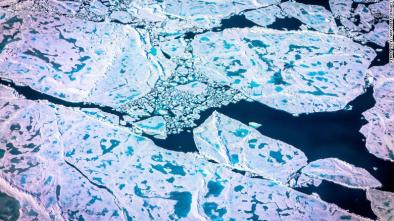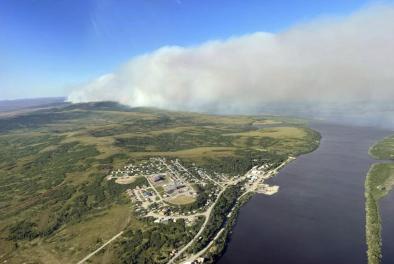Future changes in Northern Hemisphere summer weather persistence linked to projected Arctic warming.
Study key findings & significance
- Using a new approach of tracking weather systems to see how quickly they move, the researchers identified a link between slower-moving summer weather patterns and a smaller temperature difference between the equator and the Arctic, caused by the latter warming more rapidly.
- In recent decades, when the temperature difference between mid-latitudes and the Arctic was smaller, that correlated with summer weather hanging around longer in one place.
- If that trend continues, heat waves might become significantly more persistent over the next 70 years or so, particularly in regions like the southern U.S.
- Given that future heat waves are also expected to be hotter, the research points to a potential double atmospheric whammy that could strain societies’ ability to cope: hotter weather that sticks around longer.
- Under a high-carbon-emissions scenario called RCP 8.5, in which the world completely fails to rein in its carbon emissions, some climate models project the Arctic-mid-latitude temperature difference will shrink much further. If that happens, the study found that summer weather patterns could slow by as much as 11 percent across Europe and 33 percent across Russia by the end of the century. In southern North America, systems could slow as much as 58 percent—causing heat waves to linger in one place that much longer.
- “This study supports the hypothesis that rapid Arctic warming will favor more persistent summer weather, which often leads to the very extremes making headlines in recent years: prolonged heat waves, droughts, and rainfall,” says Woodwell Climate Research Center senior scientist Jennifer Francis, who wasn’t involved in the new study.
Abstract
Understanding the response of the large‐scale atmospheric circulation to climatic change remains a key challenge. Specifically, changes in the equator‐to‐pole temperature difference have been suggested to affect the mid‐latitudes, potentially leading to more persistent extreme weather, but a scientific consensus has not been established so far. Here we quantify summer weather persistence by applying a tracking algorithm to lower tropospheric vorticity and temperature fields to analyze changes in their propagation speeds. We find significant links between slower propagating weather systems and a weaker equator‐to‐pole temperature difference in observations and models. By end of the century, the propagation of temperature anomalies over mid‐latitude land is projected to decrease by ‐3%, regionally strongest in southern North America (‐45%) under a high emission scenario (CMIP5 RCP8.5). Even higher decreases are found (‐10%, ‐58%) in models which project a decreasing equator‐to‐pole temperature difference. Our findings provide evidence that hot summer weather might become longer‐lasting, bearing the risk of more persistent heat extremes.
Related Content





